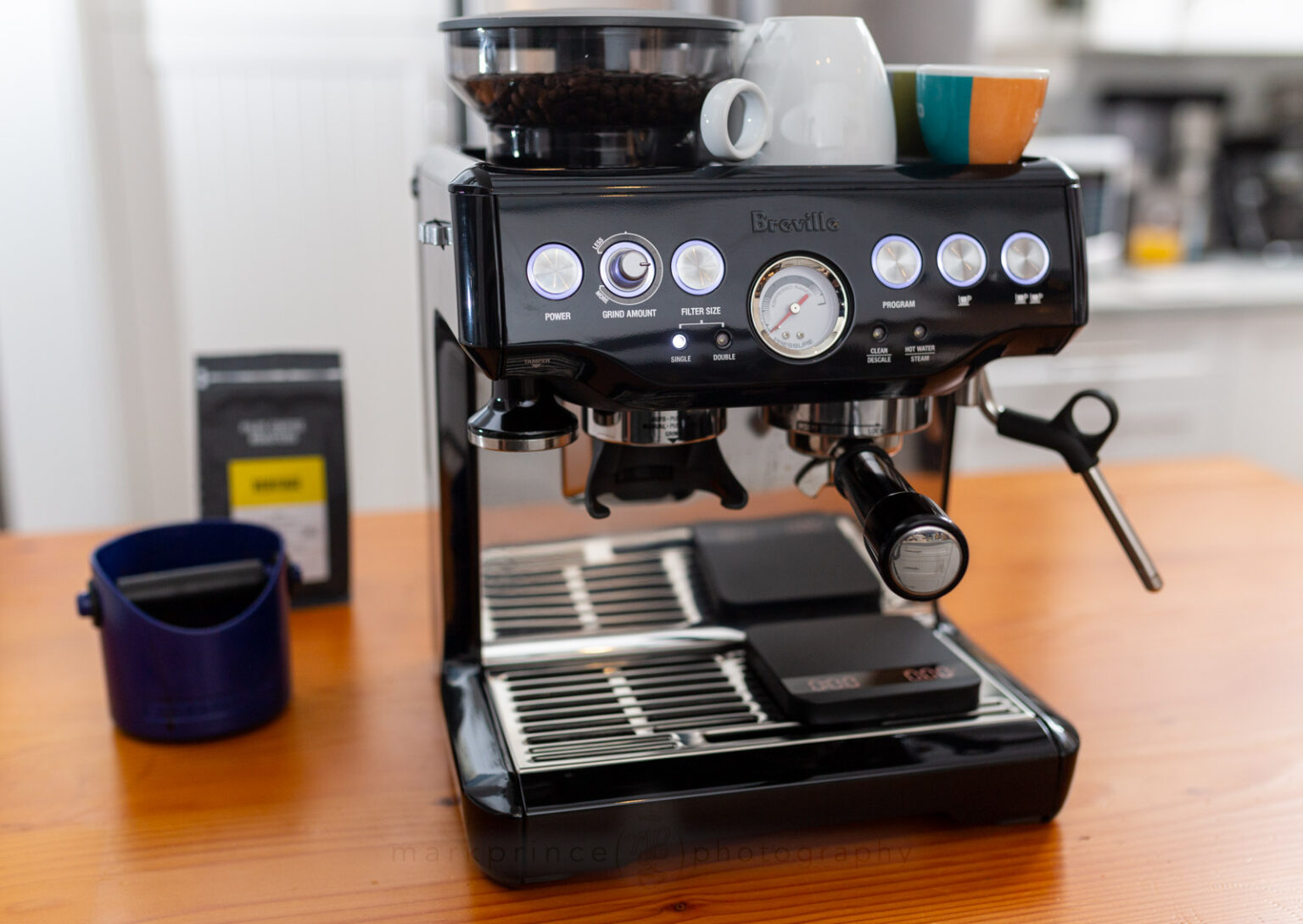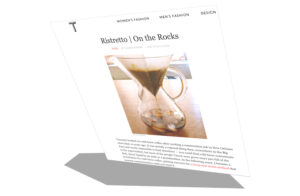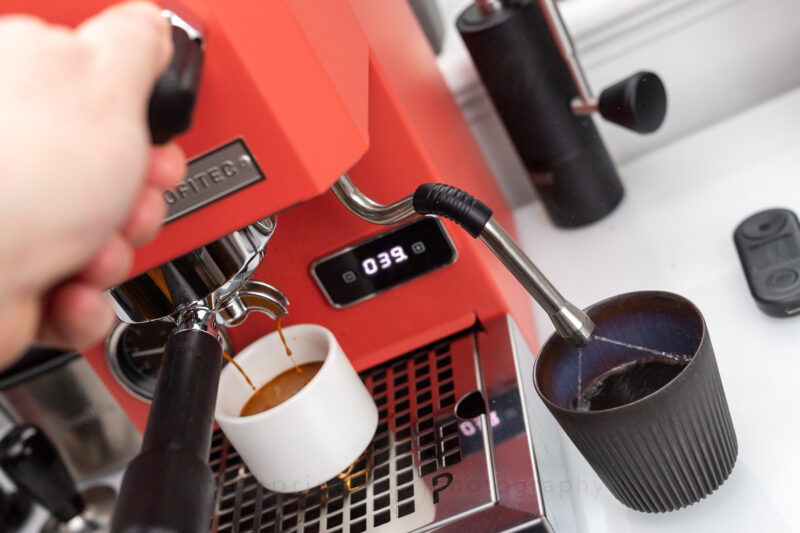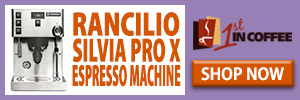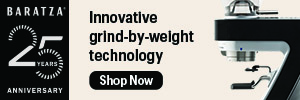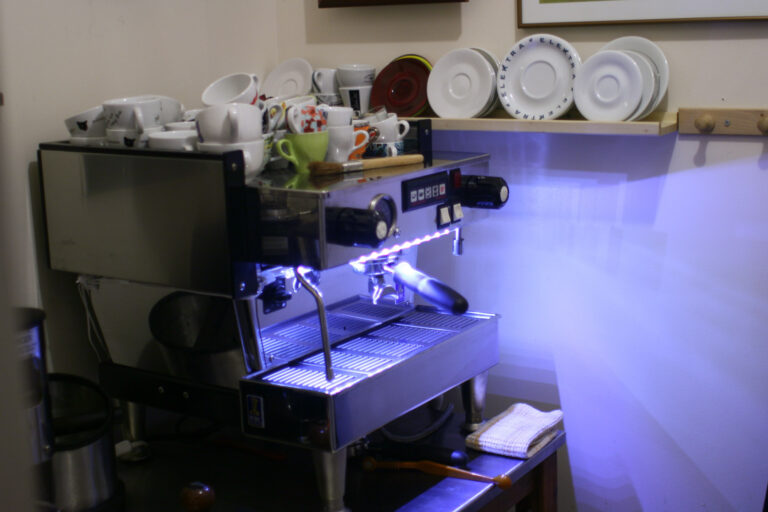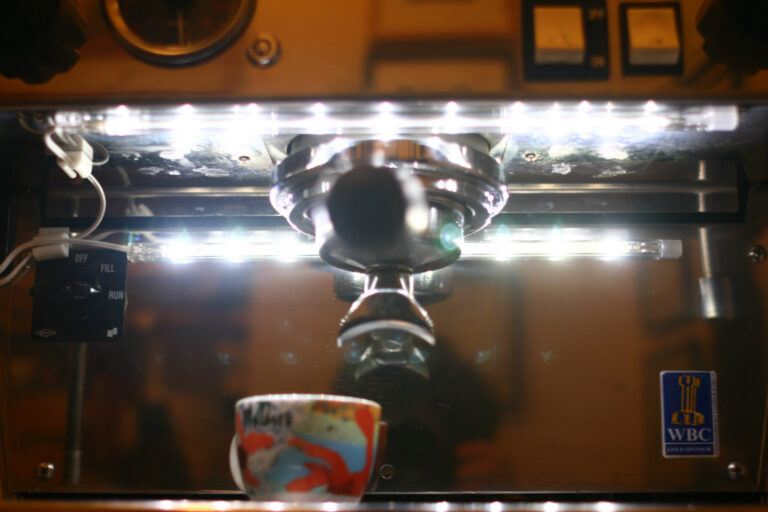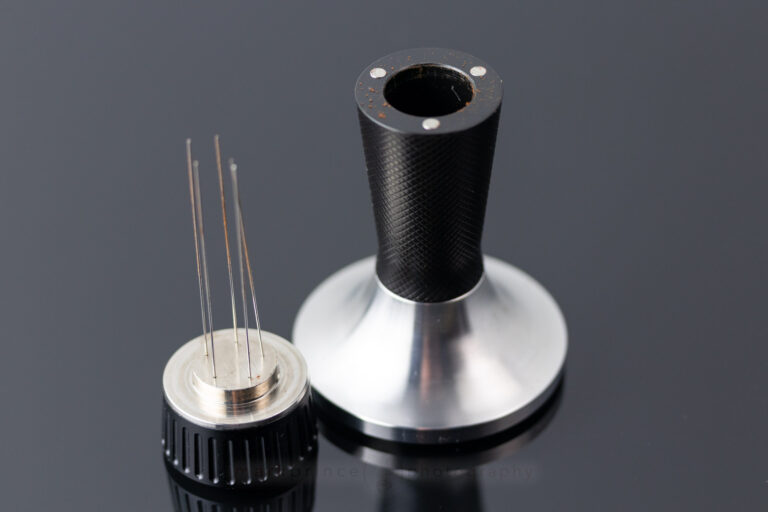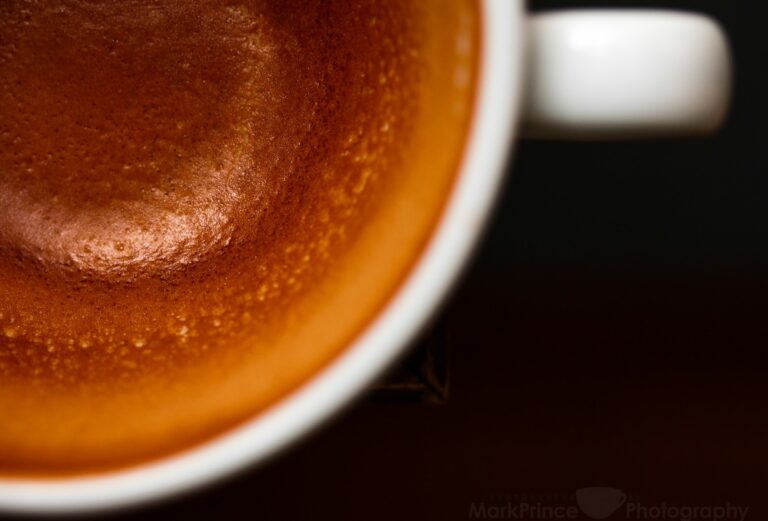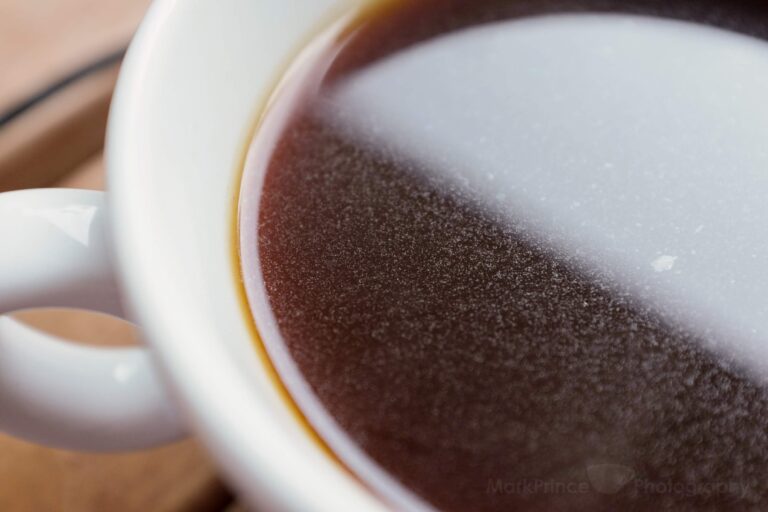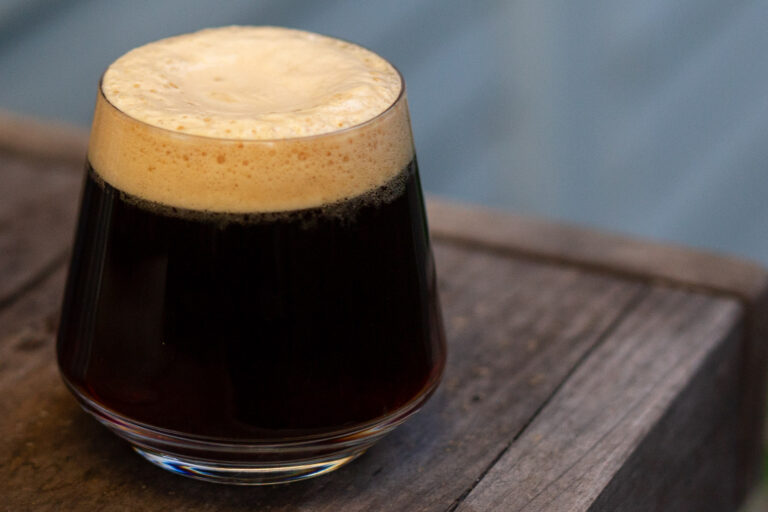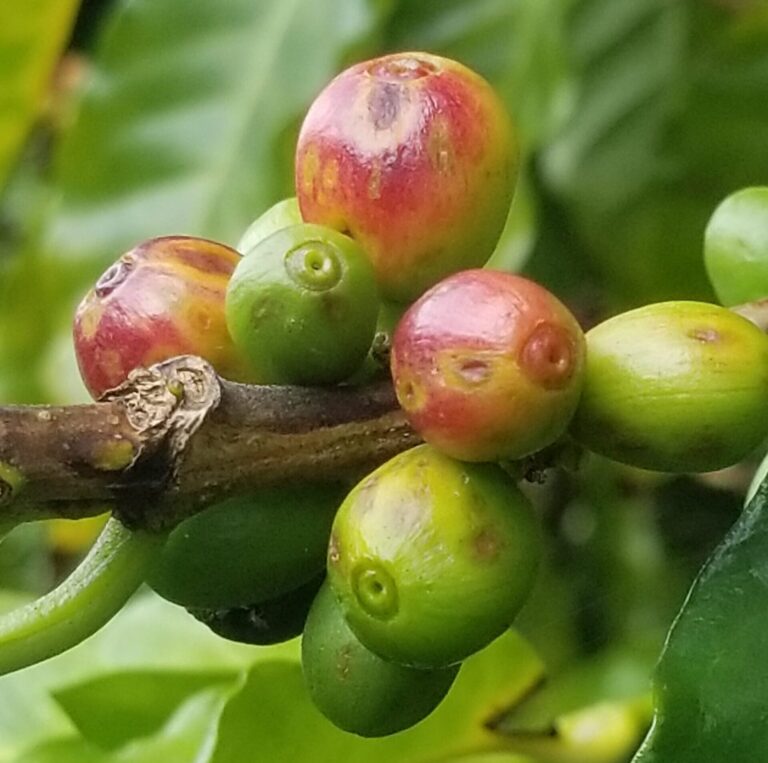Newly Updated March 5, 2024.
The Breville Barista Express… the best selling espresso machine on the planet, for 10 years now. Introduced in March, 2013, it is still going strong today.
The reasons are plentiful. Prior to the Barista Express, most grind and brew espresso machines were just plain bad. Several Italian manufacturers tried that space, and the built-in grinders were usually clunky and badly designed (picking up a lot of moisture from the machine). The espresso parts were the lowest quality stuff they could bolt together. I know. I tested more than a few of them.
The Barista Express changed this. It has a full PID control brew and steam thermocoil heating system. It also has six different temperature settings available, though you cannot dial into specific 1F temperature changes like more advanced PID controlled machines.
The Express’ well designed grinder section is very isolated from any of the machine’s moisture, and is based on Breville’s Smart Grinder Pro standalone grinder. It still uses Breville’s 10+ year old burr group (some of their more recent Barista machines have migrated to Baratza’s M2 burrset, a superior burr technology).
The transition from brewing to steaming on the Barista Express is very short – indeed, one of the shortest single-water heater transitions on the market in 2013 – and it has nice auto-purge features to get the thermocoil back to brewing temperatures after steaming.
The benefits of the machine continue: the Barista Express is an excellent steam producer for a single boiler machine. It is a programmable automatic machine, meaning you just need to press a button once to brew a shot and the machine will end the shot after a predetermined time. The cup tray gets warm enough, and the drip tray is voluminous, with some hidden features. And there’s that pressure gauge up front which is rock solid and works the charm to help you gauge shots.
For 2013, this was state of the art and class leading in many consumer espresso categories. Here’s the introduction video Breville did for the machine back then.
We’re approaching 2024 now, and the Barista Express is showing its age in some ways. It is virtually identical today to the 2013 variant, with one change: Breville added a proper 9BAR OPV valve to the Express around 2019.
In the meantime, many other machines in the Breville lineup have surpassed it in some ways. For instance, even the diminutive (and cheaper) Bambino Plus from Breville has a better volumetric shot system and a completely automated steam and froth system.
Being 10 years old, I would like to see Breville take the Express to a 2.0 level, keeping in mind they have four other machines in the Barista lineup: the Barista Pro, the Barista Touch, the Barista Express Impress, and the Barista Touch Impress (all Amazon links). If I’m honest, I think some of those machines need improvement too.
Here are my main suggestions to Breville for the future roadmap of the Express.
Update the Grinder
Time has moved on from Breville’s now nearly 12 year old grinder design and burrset found in the Barista Express. Better conical burrs have come along. Inexpensive plasma generators eliminate static and reduce clogging and compaction. Better grind chamber designs eliminate spaces for coffee grounds to build up and retain inside the grinder.
Breville has done this with their new Barista Touch Impress machine to a point: they are using Baratza’s much improved Etzinger M2 conical burrs in that grinder housing.
The Barista Express 2.0 machine should have its grinder redesigned to nearly eliminate retention, reducing grind clumps, and reduce static issues. Put the Baratza M2 burr set in there, or an even better one. And give more finite control over super-tuning the grind output.
And speaking of the grinder and its role in the Barista Express…
Improve the Grinder Timer Dial
When the Breville Barista Express was released, its digital timer dial, basic in function with no visible readout, was fine and acceptable for its price point.
Today, it’s severely dated. We can get coffee grinders now with 0.1second resolution in their digital timers for under $75.
If Breville ever does a Barista Express 2.0, it would be well equipped with a more accurate grinder timer, ideally with a digital readout and down to 0.1 second resolution.
Keep the Analog, But Add a Dial
People absolutely love the analog pressure gauge on the Barista Express. When I was showcasing the Barista Pro machine to a group of local espresso enthusiasts, they were asking “where’s the dial?”.

Pressure Dial
One of the most favoured features on the Barista Express.
Breville should keep the analog pressure gauge on the Barista Express 2.0, which gives the Barista Express a “pro” feel for consumers.
They should also add another analog dial above or beside it: a shot timer gauge. There’s lots of digital shot timers out there on various espresso machines these days, including other Breville espresso machines. I cannot recall any analog dials, looking like an old-school tachometer stopwatch used in auto racing.
As an aside, I actually suggested to Kees van der Westen back in 2010 he should add a shot timer to his Iconic Speedster espresso machine. I suggested it be an analog dial that resets automatically when the next shot starts. Alas, when van der Westen finally did add a shot timer to the Speedster, it was digital. And in my opinion, looks entirely out of place on that beautiful steampunk styled machine.
Breville could once again really stand out with the Express 2.0 and add an analog, tachometer style shot timer that starts as soon as you begin a shot, and rests when a) you start your next shot or rinse the group, b) 30 seconds after the shot is done, or c) if the barista presses a small analog button to reset).
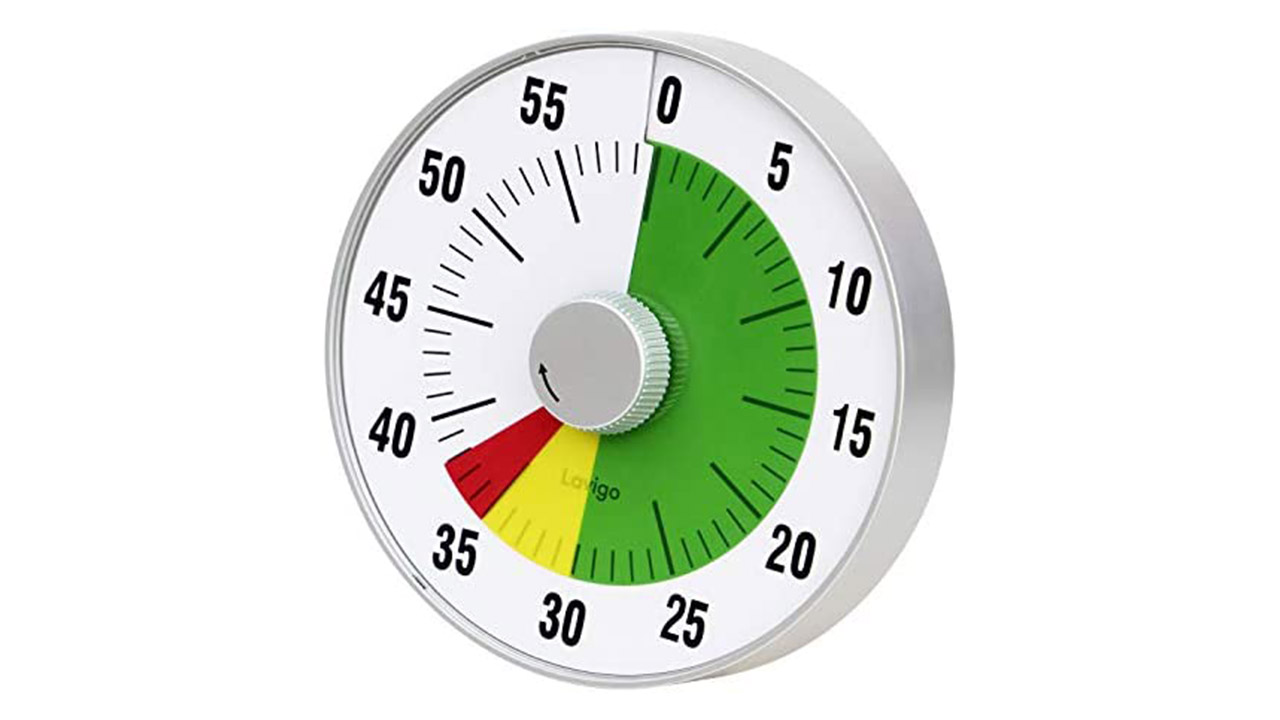
Timer Dial
Some kind of advanced analog timer dial that resets, freezes, and perhaps even shows preinfusion time would be a great addition to the Express.
Add a Low Water Sensor
The Barista Express does not have a low water sensor for its water tank, which is a bit surprising, as it was a common feature on many espresso machines even 15 years ago.
On the BBE 2.0 model, Breville should add one: at least the same system that’s on the Bambino Plus, one that interacts with the machine’s control panel as well as in shot volume management.
A neat trick Breville could introduce is a two stage low water sensor, akin to what machines like the La Marzocco GS3 has. That machine will trigger the low water message on the display panel and not let you pull another shot until you fill up. But if you are in the middle of pulling a shot and the low water sensor engages, it will still complete the shot, running on a small reserve of water in the reservoir.
Barista Lights
Way, way back in 2005, I saw early LED lighting on an espresso machine at Espresso Vivace in Seattle, lighting up the drip tray area where the shots were pulled. I loved it so much, I modified the La Marzocco GS/3 prototype I had back then (which was housed in a Linea body) to have LED lights. I found the warmest lights I could, but they were still very “cold white”.
Still, it made a big difference in analysing shots.
Fast forward, and still to this day, very few espresso machines have “Barista Lights” lighting up the brew area. Some commercial machines do, and Breville’s Oracle Touch has adjustable LEDs that light up the grinder, portafilter and steaming areas. The new machine being brought in by Turin, called the Legato, also has an LED light on the left side, lighting up the drip tray area.
The Barista Express 2.0 could really distinguish itself as a killer machine by adding well thought out brewing area lights. By well thought out, I’m talking about colour temperature adjustable lights, going from 3200k to 6000k, and having the auto-adjust depending on the ambient light. Make sure they focus wide light over the drip tray area. Also, give the owner the option to turn them on or off.
That Tamper

The Barista Express was notable in 2013 because it came with a tamper. More importantly, the tamper clamped into the machine via a magnet and could be used in place (lift the coffee-filled portafilter up to it). It was a nice addition, but the tamper is quite cheap.
I think Breville should keep the concept and execution of that tamper intact for the Express 2.0, but add something secret to it:
One of the big trends in espresso is the Weiss Distribution Technique (the WDT, we’re working on an article about that) and WDT devices which are thin, stiff wires used for stirring. One of the better accessories I’ve bought for the Barista Express is a WDT / Tamper device, all in one. The WDT tool is built right into the tamper’s handle.
Breville could totally do this, and practice a company mantra about “a single moment of brilliance” where they have added features in their products you don’t expect. If safety and damage is a concern, make the bristles out of stiff nylon and easily replaceable.
One caveat on this: if they include a WDT device in future Barista Express models, they also will have to include a WDT collar for their portafilters. There’s plenty of after market ones (including ones that work with the Barista Express’ grinder).
Breville already sells their own plastic dosing funnel, but could include it with the Barista Express 2.0.
Steaming System
The Barista Express is a good machine for steaming milk, but it has also been surpassed by machines like the Bambino Plus, the Barista Pro and Barista Touch.
I would still keep the Barista Express 2.0’s steam system more on the analog side (no auto steaming). It could be even quicker to transition, and have a better way to avoid all the extra liquid water it introduces to the steam pitcher at the start of steaming.
If Breville can find a way to make the steam output a controlled variable, from a scant puff to full on steaming via an adjustable knob, that would be better still.
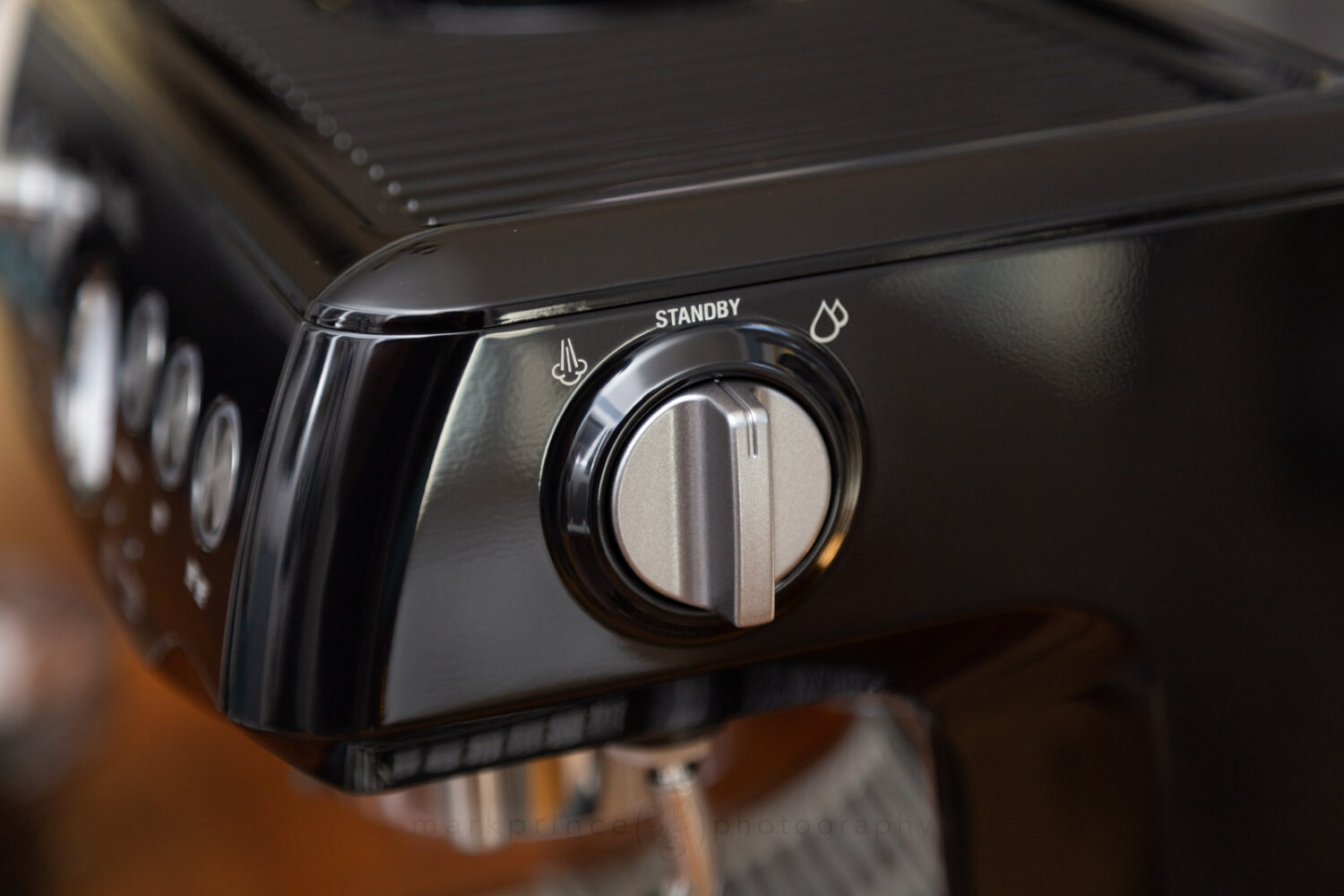
Steam Dial
The Barista Express steam control is an all or nothing affair.
The Thermocoil
The thermocoil system in the Barista Express is excellent in many ways. Very fast to heat up. Even faster to transition to steam from brew. Equally fast to transition back to brew from steaming with some built in purge magic Breville has designed.
This is one area where the 10 year old BBE beats Breville’s newer machines like the Barista Touch and Bambino Plus and their instant-on thermojet systems: because the older thermocoil system does a great job heating the grouphead up and heating up the cup tray. The thermojet system on the new machines don’t do either very well.
The heating performance of the thermocoil system is so good, I originally thought the BBE was a boiler based system; you only notice it’s a thermocoil if you try drawing off hot water via the water tap: it can’t quite keep up with longer hot liquid draws.
In the next Barista Express, I’d like to see Breville keep with the thermocoil system, and perhaps put their thermojet system in place just for steaming and hot water delivery. A new variant on the dual boiler!
Or…
Breville has to figure out a way to heat up the grouphead and portafilter in their new nearly tankless “instant on” thermojet systems. If they can get it so the grouphead is nice and sizzling hot within 2 minutes of the machine being turned on, then by all means bring this instant-on system to the Barista Express 2.0. But for now, I like the thermocoil and thermojet dual option.
Concluding Thoughts
The Barista Express from Breville is a fantastic machine we’ve been recommending at CoffeeGeek for nearly 10 years.
It still is a fantastic machine and an awesome value to this day. But it is showing its age. Breville does have more advanced technology in the other Barista machines, and the Express is meant to be their entry into super high end home espresso; it should stay that way.
That means no fancy drink builds, or advanced shot timers and volumetric volume output counters on an OLED touch screen up top. No automated frothing systems either.
What made the Express so good is it was not only class leading when it was introduced, but had a range of unique, high end features no other machine had. For the Barista Express 2.0, Breville should go the same route. Build a “entry point into high end espresso in the home”, but offer new cutting edge features not seen on other machines in its class or price range.
Barista lights, an analog shot timer, a WDT device included, updated and improved grinder components, and maybe even a tighter ability to program the brewing temperatures and preinfusion modes would further set this class leader apart from the crowd.
These things could take the Barista Express well into the 2030s.

